[WR]F.A.Q - Terrestrial Season
Posted by Logan Griffith & Nick Teynor on Aug 29th 2025
Honestly, it's kind of always terrestrial season in the summer months. Ants and beetles are always on the menu, but come August when the grass dries out and the hoppers move closer to the water... that's really what we at the shop consider the start of terrestrial season! Who doesn't love throwing a large, leggy foam fly pattern against a bank and watch a submarine come out of the shadows and grab it? Sometimes it's a mayfly spinner kind of sip, sometimes a full on "Great White Shark-on-Seal" explosion. Sometimes you can see the "V" wake move toward your fly before it's annihilated. Any way they'll come and get it, we'll take it! Load up the hopper boxes or grab a fresh pack of foam and rubber legs and hit the vise. Next week it will be September; we're on borrowed time. The good news? There are fish to be had on some of the biggest and most fun dry fly patterns we fish all year. What are you waiting for?
Follow along in our latest Western Rivers Frequent Angling Questions or [WR]F.A.Q's as we break out the big bugs and basics for Terrestrial Season!
What are the relevant terrestrial species on our local trout waters?
While cicadas do play an important role as food for trout in some of our local fisheries, they are only around in the late spring through early summer, and are limited in their distribution. Whereas the more consistent and available terrestrial insects important to both fish and anglers are ants, beetles, crickets, and grasshoppers. These “Core 4” terrestrials are available to fish for months, and fill in the food gap for fish once the Summer aquatic insect hatches start to slow down.
When does terrestrial fishing get good and what kind of weather is best for fishing them?
Typically, the terrestrial fishing in the intermountain region really starts to get good around the last week of July, and can go all the way to early October if the weather stays warm and sunny. Many people ask us why fishing terrestrials during the early part of the summer isn’t as productive, and the reason is simple: There are lots of green, leafy foods and water sources available to these insects far away from the water. However, once the fields and trees start to dry and wither, and the seasonal creeks and ponds dry up, these bugs have to migrate closer to the waters edge to find fresh green food. Add in the fact that these insects are most active during these hot summer days, are close to bodies of water full of hungry fish, and are easily blown into the water by the wind-you have all the ingredients for good-great dry fly fishing with terrestrials. An ideal “hopper day” is warm with stiff enough gusts of wind to move the bugs. If the wind is too much or too consistent, the hoppers will become less active.
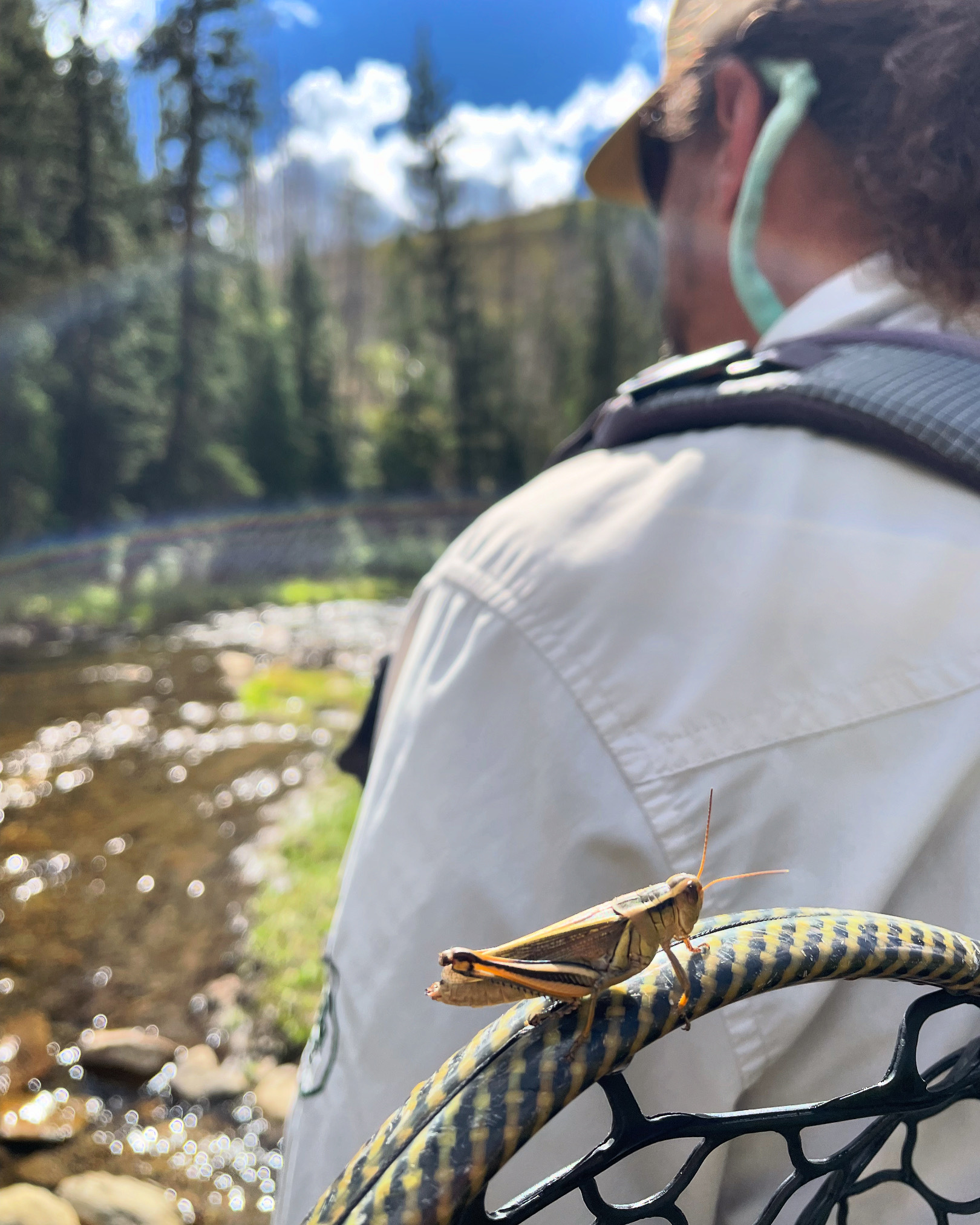
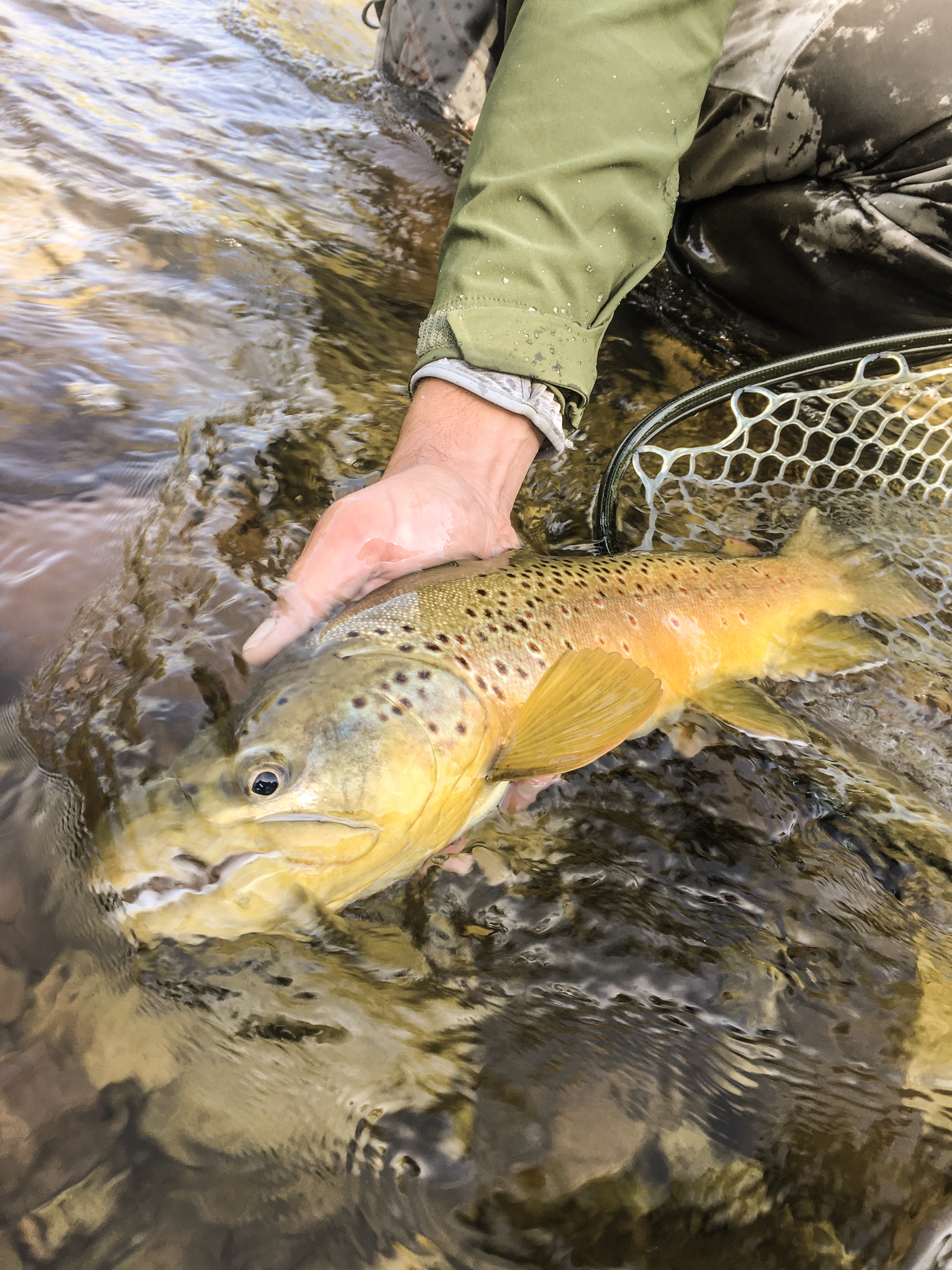
"What should I tie on?" Umm, look around. You never know where a clue might be hitch hiking!
What kind of water and environment should I be looking for to find fish that are keyed on terrestrials?
Fish want to be where the food is, and since terrestrials are literally land-based insects, fish will move closer towards the rivers edges to find them. We recommend looking for slower, deeper pockets of water right next to the bank, undercut grassy banks, overhanging trees and willows, and river edges that don’t have a well-worn walking path along the river's edge. This last location may seem odd to mention, but it makes total sense when you think about it. People walking up and down a river bank will spook fish that would otherwise be there. That’s why fishing a river bank with good structure, and one that doesn’t have a lot of foot traffic, will always be more productive.
Another couple of important things to do while fishing terrestrials is to move your feet, and to put your flies literally right next to the bank. Fish are either going to eat or not eat your fly, and in order to find more fish, you’ll need to cover more ground. Also remember that terrestrials are most active during the warmest parts of the day, which means fish will usually seek out shady cutbanks or calm pockets of water next to fast currents. To lure a fish out of its comfort zone, you’ll literally need to put it right on the bank. The difference between finding fish, or no fish on terrestrials, is inches. Compared to presenting a mayfly or caddis pattern, don’t be afraid to put the fly on the water with a little gusto or give it a twitch! These bugs are doing their best to avoid the water, and will try to remove themselves from it if they fall in. As a result, a twitched hopper can sometimes yield explosive eats!
Should I put on an Ant, Beetle, Cricket, or Hopper?
What terrestrial you put on will be determined by the environment you're fishing, and how the fish are reacting to your fly. If you are fishing in a meadowy environment, all of the “Core 4” terrestrials could be in play-especially grasshoppers. If you are fishing where there are lots of trees, willows, or bushes-you’ll find that ants and beetles are more likely to be the most readily available terrestrial to the fish. If you are fishing in a meadow, and there are lots of grasshoppers close to the river's edge, it would make sense to tie one on and see what happens. If you’re not getting any takes on a grasshopper, or you see fish refuse your fly, then it is time to switch it up to either an ant, beetle, or cricket.
How late into the season can I continue to throw terrestrials?
As long as the weather stays warm and sunny, we can expect to fish terrestrials into early October on our lower elevations streams, lakes, and reservoirs. Things do get colder much faster at higher elevations, and the terrestrial season in the high country can come to an abrupt halt after the first heavy frosts, or snow storms of the season, which can occur as early as late September or early October. One thing to keep in mind when fishing terrestrial flies during the Fall, is that the bugs will be most active during the hottest times of the day, which means tying on a terrestrial during the morning or evenings probably won’t result in many fish eating your fly. On streams that run through high desert(ish) environments, like the Green River below Flaming Gorge, we’ve fished terrestrials until the end of October as long as the weather stays warm. However, once the first couple of cold frosts hit, then it is game over, and time to look for the Fall Blue-Winged Olive mayfly hatches, or strip some streamers.
 .
. 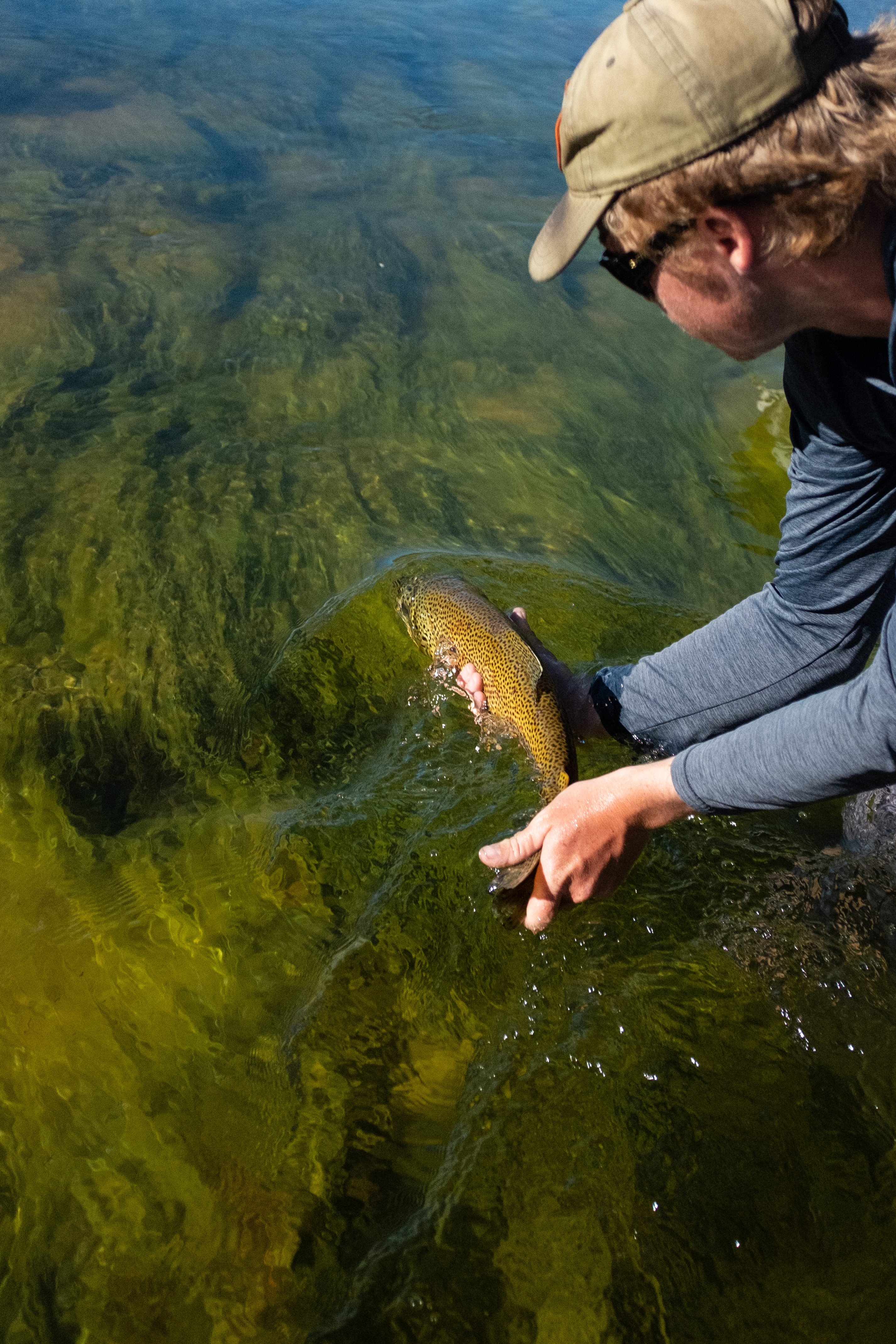
This is was a crisp but comfortable October day with Western Rivers Guides Jack O'neal, and the fish were still tucked in to the bank looking for those big terrestrials! Ph. Logan Griffith
What rods, lines and tackle are best for terrestrial fishing?
I’ll generalize things here and say that Ants and Beetles are typically smaller than grasshoppers, and are best represented with imitations in the #12-#18 size class. Being the case, these insects are pretty easily presented with whatever size rod is appropriate for the size water that you’re fishing. Hopper patterns are usually much larger, heavier, and less aerodynamic; often tied on hook sizes between #6-#14. If you combine this with that “hopper wind” that makes for the perfect day, you’ll want to make sure your rod has the backbone necessary to turn over a bug like that. Faster action rods are the norm here, primarily in 5wt & 6wt line weights. Some of our favorite hopper rods in 9’ 5wt & 6wt’s are the Sage R8 Core or Classic, Scott Centric, Orvis Helios & Winston Air 2. For wade fishing, or fishing smaller waters, some other cool rods are the, 8’3” 5wt Winston Pure 2, 8’6” Winston Air 2, 8’8” 5wt Scott G-Series, and 8'6" 5wt R8 Classic.
Line tapers are not all created equal and the line you use to delicately present a PMD is going to struggle punching a hopper into the wind. Tapers such as the Scientific Anglers Infinity & Rio Gold Max are overweighted and have the mass to push those larger bugs around. From the boat, the Rio Bank Robber is a super fun line and has the mass to move a larger bug but the shape allows easy pickup to re-present the fly at the end of your drift.
For tippet and leader, you’ll want to shorten things up a bit and tippet up in size. Shorter leaders will kick over a little harder and transfer that energy through to the fly more easily. A super easy rule of thumb regarding tippet is to take the hook size and divide by 3 (rounding up if necessary) for the appropriate tippet size. Throwing a #12 hopper? 12 divided by 3 = 4X leader and/or tippet! Obviously there are exceptions to this rule, but it’s a good starting point.
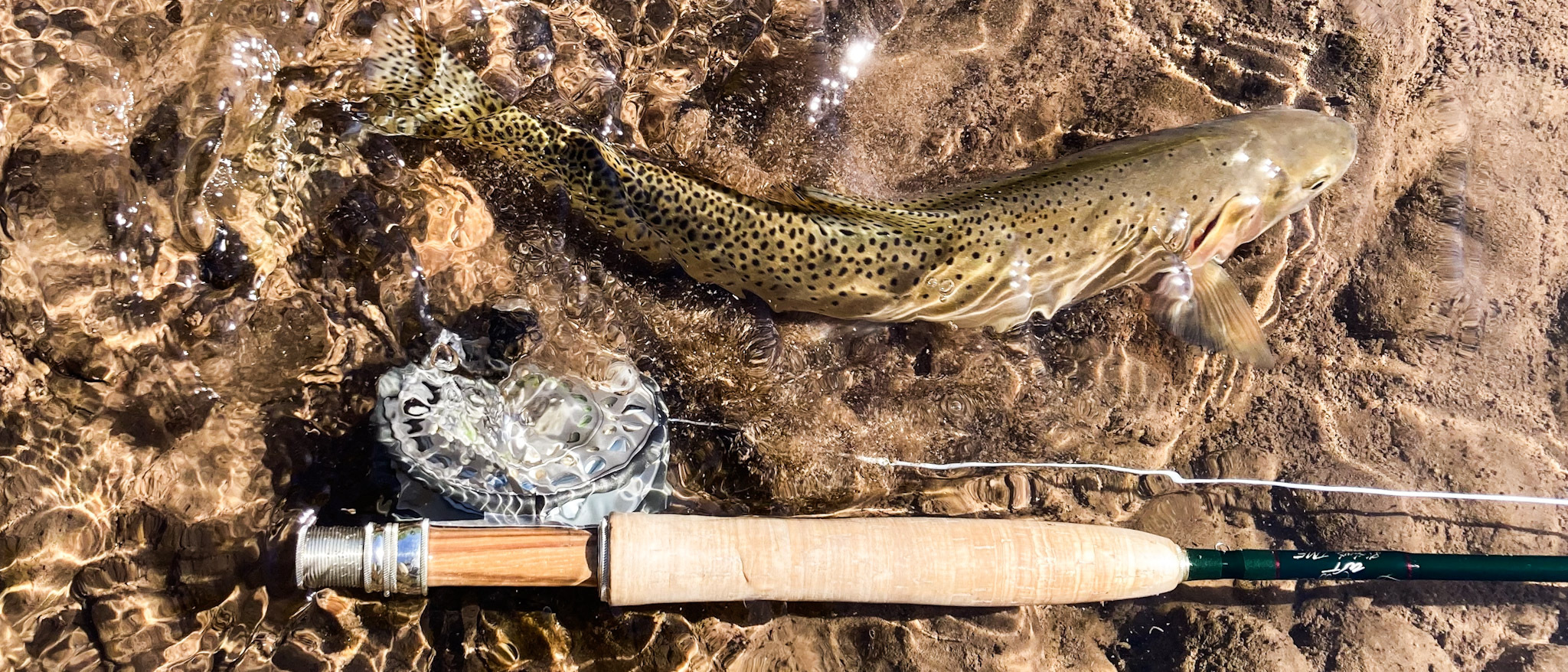
Cutties love big, leggy, foam-y flies. Say no more...
What are some of our favorite terrestrial patterns?
Ants: Deer Hair Ant (#12-#16), Shimazaki Ant (#14-#20), Harrop's Honey Ant (#14-#16)
Beetles: Crow Beetle (#14-#16), Gulp Beetle (#14-#16), Fat Albert (#10-#14)
Hoppers: Morrish Hopper (#6-#14), Chubby Chernobyl (#8-#14), Thunder Thighs (#10-#14), Mimic Hopper (#12-#14), Parachute Hopper (#8-#14)
Cricket: MFC Para Cricket (#10-#14), Peacock Chubby (#12-#16)
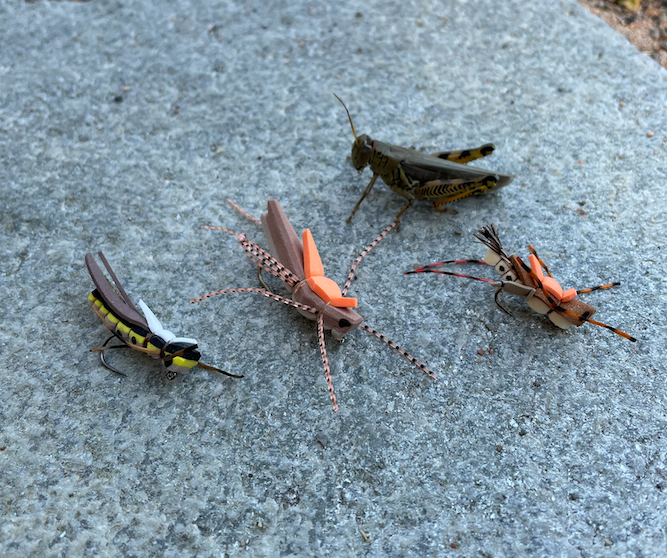



![[WR]F.A.Q - Terrestrial Season [WR]F.A.Q - Terrestrial Season](https://cdn11.bigcommerce.com/s-8uk8w4kj9b/images/stencil/460x250/uploaded_images/screen-shot-2025-08-22-at-4.08.18-pm.png?t=1756828305)
